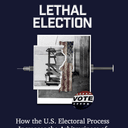Commenting on the recent halting of executions over the lethal injection controversy and DPIC’s Year End Report, the Boston Globe raised the question of “whether execution by any method is right.” Their editorial concluded that “[t]his hit-and-miss system offers no protection for society,” and stated that a life-without parole alternative would “protect society while allowing for redress if a prisoner could show he was wrongly convicted. A ban on executions would spare judges and juries from having to consider whether mental illness, age, or other mitigating circumstance should preclude a death sentence. The legal system cannot make these Solomonic decisions with assurance of a just outcome.“
The entire editorial follows:
Rethinking the death penaltyTHE UNITED STATES may be slowly ridding itself of the urge to impose the death penalty, according to a study released last week. A protracted execution in Florida on Wednesday starkly illustrated one of the reasons for the change in attitude.
Angel Diaz was the 53d and last person to be executed in the United States this year. He was strapped onto a gurney and given an injection that was supposed to kill him within 15 minutes, but he lay there squinting and grimacing, and seemed to be trying to speak. Prison officials had to give him a second injection, and it took him 34 minutes to die. .
Governor Jeb Bush promised an investigation and suspended executions pending the results, but the exact reason for Diaz’s ordeal ignores the wider question of whether execution by any method is right. The murder took place in 1979, and any deterrent effect has vanished. Thousands of people have been murdered in the state since then, yet only 64 have been executed. This hit-and-miss system offers no protection for society.
Other states are starting to accept this reality, according to a survey by the Death Penalty Information Center in Washington, D.C. The 53 executions this year are down from 60 the year before, and 98 in 1999. The New Jersey Legislature imposed a moratorium on executions, and North Carolina and California began legislative studies of their systems. The issue gained urgency in Califonia last week when a federal judge ruled that the injection procedures followed there were so cruel that they violated the US Constitution.
Based on the Florida experience, it’s easy to understand why states are wary. Florida abandoned the electric chair in 2000 in favor of lethal injections, but Diaz’s prolonged death shows this method to be similarly inhumane. Even if a painless system were devised, the variation of sentencing across multiple jurisdictions is inherently arbitrary.
Support for capital punishment remains steady at two-thirds of those polled nationally, but when details are provided of the executions, that begins to erode. And when given a choice of execution or life without parole, a slight majority in a recent Gallup Poll favored the life sentence. This punishment would protect society while allowing for redress if a prisoner could show he was wrongly convicted. A ban on executions would spare judges and juries from having to consider whether mental illness, age, or other mitigating circumstance should preclude a death sentence. The legal system cannot make these Solomonic decisions with assurance of a just outcome.
Before he died, Diaz called his execution an act of vengeance. Perhaps, but given the 27-year lapse between crime and punishment, there was no public outcry for his death. His execution rather shows the capricious nature of a brutal act that should have no place in American society.
(Boston Globe, Dec. 19, 2006). See Editorials and Arbitrariness.



